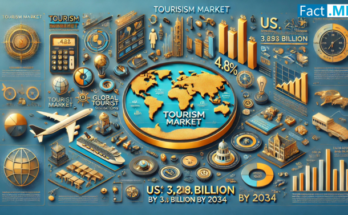The Impact of Globalization on the Consumer Goods Market
The consumer goods market has witnessed great transformations as the world becomes more and more interconnected. The clear boundaries which once existed between local and global markets have blurred, and the consumer goods industry has been at the head of this change.
Benefits offered by Globalization in the Consumer Goods Market
Diverse Product Offerings
- Globalization has increased the variety of consumer goods available worldwide. With the increasing connection of markets, companies now have access to resources and products from different regions, leading to a more diverse selection of offerings for consumers. Interconnected markets allow companies to source materials and products from different regions, further adding to the diversity of consumer goods.
- For instance, the popularity of Japanese anime culture shows the impact of this diversity. Japanese anime has gathered a massive global following. Demand for Japanese merchandise, including clothing, toys, and accessories, has increased across the globe. Fans of anime seek to express their passion and support for their favorite shows by purchasing related merchandise.
Access to New Markets:
- Globalization opens untapped markets for consumer goods companies. As companies expand their operations to different countries and regions, they gain access to new and previously untapped markets. The expansion provides opportunities to explore new customer bases worldwide. By entering new markets, consumer goods companies can widen their customer reach and explore diverse customer bases.
- For example, Tech giants such as Apple and Samsung have entered emerging markets (India and China) selling smartphones and electronic devices to a large consumer base. As emerging economies experience fast-paced growth and growing consumer purchasing power, they become perfect markets for global technology companies. This expansion raises revenue and brings technological advancements to regions with limited access to high-quality electronics. When global tech giants enter emerging markets, they bring with them advanced technological products that used to be less accessible in those regions.

Cultural Influence on Products:
- As consumer goods companies go global, they must adapt their products to resonate with local preferences and tastes. Different cultures have unique customs, traditions, and culinary preferences. Cultural sensitivity is crucial for gaining acceptance and popularity in diverse markets. When companies show respect and consideration for local customs, values, and traditions, it creates a positive image and fosters trust among consumers.
- McDonald’s, known for its global presence, exemplifies this approach by customizing its menu to fit regional preferences. The fast-food giant recognizes that one size does not fit all, and a standard menu might not appeal to all consumers worldwide. In India, they offer the McSpicy Paneer burger catering to the predominantly vegetarian population. This adaptation showcases cultural understanding, demonstrating that McDonald’s is not merely imposing its global menu on the Indian market but embracing and respecting the local culture.
Supply Chain and Manufacturing Efficiency
- Globalization benefits consumer goods companies by optimizing their supply chains and production processes. As companies expand their operations to different countries, they can strategically distribute their manufacturing processes, raw material sourcing, and distribution centers. Access to cheaper labor and resources in different countries has become a significant advantage for consumer goods companies. Developing countries often offer lower labor costs due to wage disparities, which allows companies to produce goods more cost-effectively.
- Contributing to cost-effective manufacturing, globalization enables consumer goods companies to tap into the strengths of various regions. For instance, some countries may specialize in specific industries, possess advanced technologies, or have highly skilled labor forces.
- Nike’s “Just Do It” sneakers serve as a prime example of how globalization is leveraged in the consumer goods industry. While the design and marketing of the sneakers are centralized in the United States, the company adopts a decentralized approach to manufacturing. This global supply chain strategy allows Nike to produce its products at competitive prices. By minimizing production costs, the company can offer its sneakers at price points that appeal to a broad range of consumers across different markets.
Market Competition and Innovation:
- Globalization has intensified competition among consumer goods companies. Companies expanding their operations to various countries encounter competitors from different regions. Rivalry on a global scale has driven companies to innovate and differentiate their products to stay ahead in the market. In this competitive landscape, simply offering standard products is not enough to capture consumer attention.
- The smartphone market serves as a prime example of fierce competition. Major players like Apple, Samsung, Huawei, and Xiaomi are constantly vying for dominance. Their goal is to gain a competitive edge and capture a larger share of the market. With billions of smartphone users globally, even a slight advantage can translate into significant revenue and market influence.
Also check our articles: 1. Increasing Demand for Clean Energy to Drive Sales of Geothermal Heat Pumps
2. Growing Manufacturing Industry to Unlock Lucrative Opportunities for CNC Lathe Machine Industry
Supply Chain Resilience Challenges:
- While globalization has its advantages, it has also exposed consumer goods companies to supply chain vulnerabilities. Globalization has allowed companies to access a broader range of suppliers and markets, enabling cost savings and efficiency improvements. Disruptions in one part of the world can have far-reaching effects on production and distribution.
- For instance, natural disasters, political unrest, trade disputes, or pandemics can disrupt the flow of raw materials, components, and finished products. The COVID-19 pandemic starkly revealed these vulnerabilities in global supply chains. As the pandemic spread worldwide, it disrupted manufacturing, transportation, and logistics. The availability of various consumer goods like personal protective equipment (PPE) and electronics was affected. Shortages of essential items like PPE highlighted the critical nature of supply chain resilience, particularly for industries that play a vital role in public health and safety.
How is globalization an advantage to consumers?
Globalization offers several advantages to consumers. Firstly, it provides access to a wider range of products and services from around the world. With globalization, consumers can enjoy a diverse selection of goods that may not be available locally. This allows them to choose from a variety of options, compare prices, and select products that best meet their needs and preferences.

Secondly, globalization often leads to increased competition among businesses. As companies expand globally, they strive to attract customers from different markets. This competition drives innovation and improved quality of products and services. Consumers benefit from this as they have access to higher-quality goods and services at competitive prices.
Additionally, globalization can lead to lower prices for consumers. When businesses operate on a global scale, they can take advantage of economies of scale and reduce production costs. This cost reduction is often passed on to consumers in the form of lower prices. As a result, consumers can enjoy affordable products and services, making their purchasing power stronger.
Conclusion
The journey from local to global is transformative, shaping not only the business strategies of companies but also the daily lives and choices of consumers across the world. As globalization continues to evolve, the consumer goods industry will remain at the forefront of change, driving innovation, embracing cultural diversity, and connecting people from all corners of the globe through the products they use and cherish.



